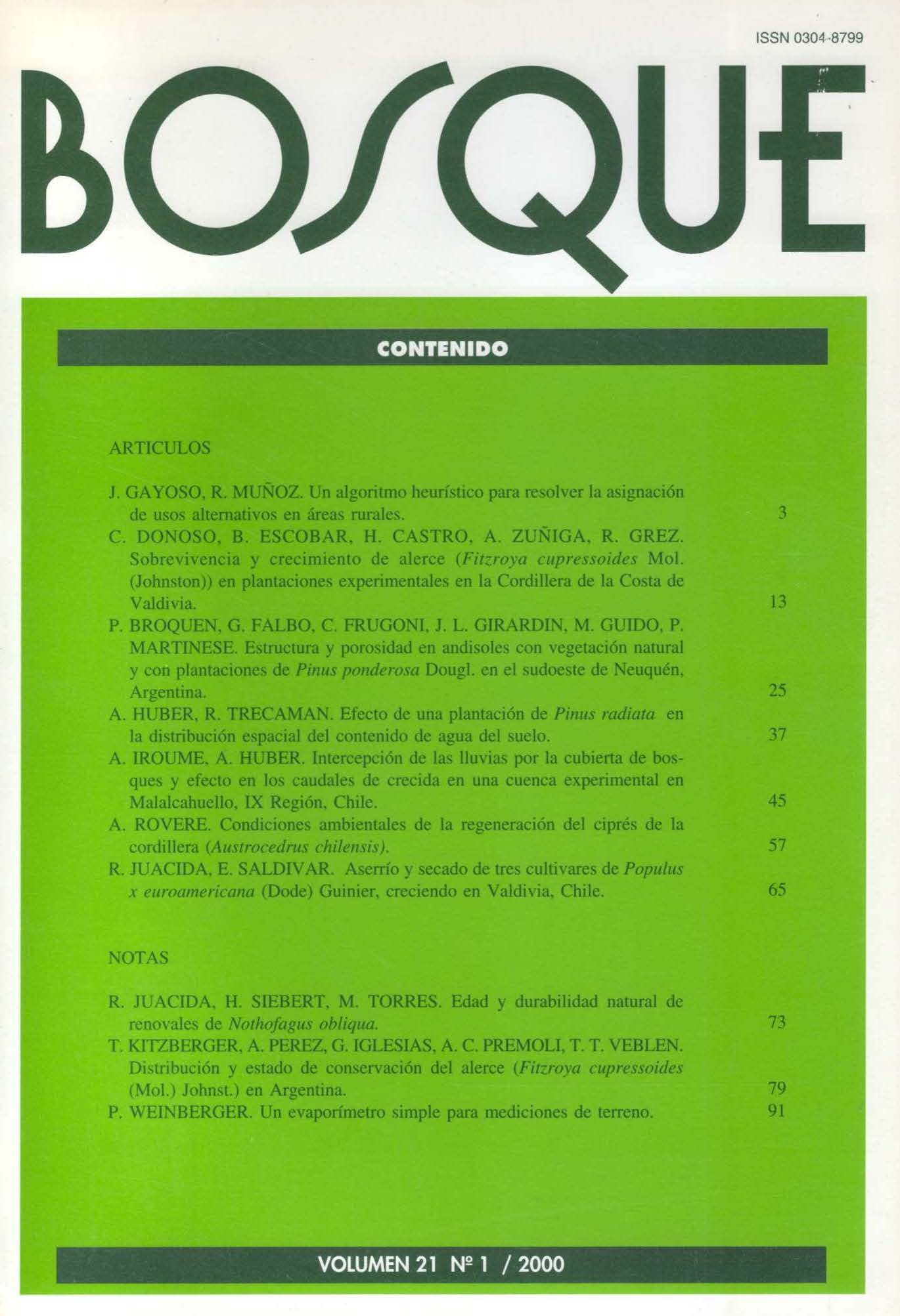Forest canopy interception and effects on peak flows in an experimental catchment at Malalcahuello, IX Region, Chile
Main Article Content
Abstract
The effect of forest cover on rainfall distribution and runoff generation processes was studied in an area in the Andes mountains, in the IX Region of Chile. Rainfall distribution was studied in two plots under two different forests and the effect of vegetation cover on discharge in an experimental catchment was analyzed using simulation models. Precipitation for the hydrological year April 1998-March 1999 was 1346 mm, corresponding to 57% of the annual long-term average for the area. Throughfall and stemflow were 66 and 8% for a native forest site and 60 and 6% for a Douglas Fir plantation, respectively, of the total 12 months precipitation. These figures reflect the lower interception capacity of the native forest canopy as compared to that of the Douglas Fir plantation. During the study period, 350 mm for the native forest and 453 mm for the Douglas Fir plantation, (26 and 34%, respectively, of the total rainfall), were excluded from the runoff generation process through evaporation of intercepted water. Potential reductions in peak flows related to canopy interception losses were detected at the experimental catchment. However, the studied events corresponded with low return period storms, which were mostly affected by the reduction of available water at the ground level. These results show the importance of forest vegetation cover in rainfall redistribution, interception and runoff generation processes.

